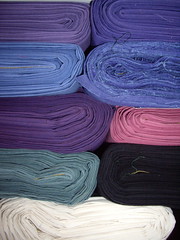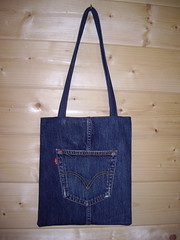Last night I watched Pop Britannia on BBC Four, and my brain has been feeling a little bit wobbly ever since.
I have found a thing that I’ve been missing for almost fifteen years, and now I need to work out the best way to get it back into my life again.
Watching that programme was like sitting in front of my parents’ record collection, and putting on singles at random. I learned to play the clarinet because I was fascinated by Acker Bilk and traditional jazz. My parents had records by Cliff Richard, Billy Fury, Marty Wilde… all sorts of people. In fact this compilation, which I gave to my Mum for Christmas, is pretty representative! A copy is now on my own Wish List.
I’ve always been a huge Beatles fan, my personal favourite album being Rubber Soul. That’s the point at which they changed from being just like all of the other groups of the time, singing mostly songs which other people had written for them, and started releasing records comprised mostly of their own music. But one of the things that I particularly liked about music during the late 1950s and early 1960s was that it was all about the songs. Singers weren’t expected to be songwriters – the writing was already done, and you would choose the songs you wanted to sing. (Or more likely, your management would choose them for you.) I would have loved to have been a singer during that period, and I still love singing the songs of that era.
Distressingly, I have none of this music whatsoever in my iTunes, and I don’t even have anything on CD, as everything I owned was on cassette, copied from my parents’ records before I left home. I do own the Beatles’ “1” compilation on CD, but I can’t find it! It must be around here somewhere.
I have always been fascinated by the way that the art, music and culture overlapped so much with one another during this period, in a way that I don’t think had been seen since the Pre-Raphaelites. However, the Pre-Raphaelites manufactured their own culture in many ways, and what happened in the 1950s seemd to grow organically as a result of a new generation of children growing up after the war, appropriating parts of a very much desired culture seen in American movies and imported music, and creating their own version because they could. I’ve been leafing through my books on Pop Art, and reading poetry by Brian Patten, Adrian Henri and Roger McGough. I’d really like to see Pop Art Portraits at the National Portrait Gallery but it’s only on for another couple of weeks, so I don’t know whether I’ll make it.
I’ve also added more books to my Wish List, from the bibliography of an essay that I wrote in 1993. It’s called “Peter Blake and his links between Fine Art and Graphic Design”, and it was the culmination of the Art History section of my art foundation course. It’s 4,000 words long, and reading it back, even fifteen years later, I’m still quite proud of it. The conclusion’s a bit rushed, but I was already well over the allowed word count, so I suppose I thought I’d better stop! The whole thing is hand written, on square sheets of blue paper, with postcards and photocopies of the relevant images glued into place. The pages are bound into a Chinese zig-zag style of book, so theoretically you could unfold the entire thing into one enormously long sheet. I’ve just started the process of typing it up, so that I have an electronic copy. I’ll probably turn it into a web page eventually, if I can source all of the relevant images online.
I sent Paul up into the loft earlier, to find the box containing this essay, and all of my old sketch books from my A-levels and my art foundation course. I’ve been thinking of getting back into sketching again, but when I looked through those books I discovered that I’d barely done any sketching at all! All of them are filled with little bits of ephemera, cut out and glued in. I like cutting out and glueing in. 🙂
I have been doing some sketches over the past few weeks, of ideas for new clothes to make from the Bishopston fabrics, which should be arriving in the next couple of weeks. Last night I may have accidentally designed what I hope is going to be the perfect dress – for me, at least. I’m still looking at a number of reproduction 1950s dress patterns, and trying to work out which of them I could adapt to fit me, and whether they would actually be practical to wear every day. For anything I’m going to wear to work, i definitely need to add pockets! I’m thinking that I could make a pair of these capri pants in the black and silver bee brocade though, to be worn with a black polo neck.
I do wish that I’d bought the Swinging Sixties book from the V&A exhibition, although I do have plenty of photographs, which I’ve just uploaded to Flickr.
I know that all of this is vague and rambly, but I enjoyed the programme last night so much that I’m still a bit over-excited!
If you missed Pop Britannia, you can watch it online for a week, and it’s repeated tonight/tomorrow morning, at ten past midnight, and again at 02:40.
I don’t suppose anybody has any means of recording it for me?
Like this:
Like Loading...



